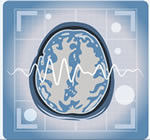Mini-stroke: What should you do?
|
Image: Thinkstock |
The symptoms may be short-lived, but you should take them every bit as seriously as you would a true stroke.
You might have heard a transient ischemic attack (TIA) referred to by its more common nickname, "mini-stroke." This moniker has led to a lot of confusion about the true nature of a TIA. "Because of what the term implies, everybody thinks it's just a tiny stroke. The truth is, the symptoms can be pretty severe," says Dr. Natalia Rost, associate professor of neurology at Harvard Medical School and director of the Acute Stroke Service at Massachusetts General Hospital.
In reality, a TIA and stroke are essentially the same—a clot or bleed that interrupts blood flow to part of the brain. The only difference is that with a TIA, the blockage—and the symptoms it causes—are temporary. Yet a TIA can pave the way for a true stroke. About a third of people who experience a TIA go on to have a major stroke within a year.
FASTwarning signs of a stroke Use the acronym FAST to spot the signs of a stroke in yourself or someone else:
|
Treat TIA like a stroke
TIA symptoms also mirror those of stroke. They include
-
sudden numbness or weakness of the face, arm, or leg—especially on one side of the body
-
trouble speaking or understanding
-
difficulty seeing in one or both eyes
-
loss of balance or coordination.
When you're in the midst of these symptoms, it's impossible to know whether you're having a TIA or a stroke, so always assume it's the real thing. "If you're having stroke symptoms, you should act on them immediately. Do not wait to see if they'll go away," Dr. Rost says.
Don't delay getting to the hospital. Even your medical team at first may not be sure whether you're having a stroke or a TIA, so they may treat you the same—with a clot-dissolving drug, if appropriate. If it is a stroke caused by a clot, you need to get medicine within the first three hours after your symptoms start for it to be effective. After that window closes, your treatment options become much more limited.
Make this TIA your last
After a TIA, your doctor will check all your risk factors for a stroke, including your blood pressure, blood sugar, and cholesterol levels, and the health of your blood vessels and heart. You can prevent another TIA, and a real stroke, by up to 80% by lowering these risks through medicine and lifestyle interventions. Your doctor may recommend that you
-
take an ACE inhibitor, diuretic, or other medicine to lower high blood pressure
-
control your blood sugar levels if you have diabetes
-
take a statin drug to lower high cholesterol
-
take a daily low-dose aspirin or an antiplatelet drug like clopidogrel (Plavix) to prevent more blood clots from forming
-
have a carotid endarterectomy or stenting procedure if you have carotid artery disease—blockages in the large arteries of your neck.
Always treat a TIA as seriously as you would a stroke. "Even though the symptoms resolve, there might be damage to the brain, so you need to see a neurologist," Dr. Rost advises.
Disclaimer:
As a service to our readers, Harvard Health Publishing provides access to our library of archived content. Please note the date of last review or update on all articles.
No content on this site, regardless of date, should ever be used as a substitute for direct medical advice from your doctor or other qualified clinician.
















